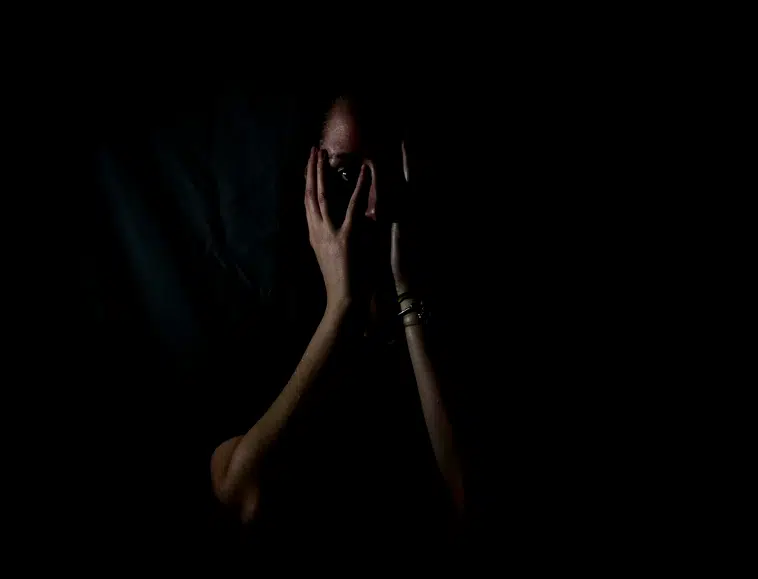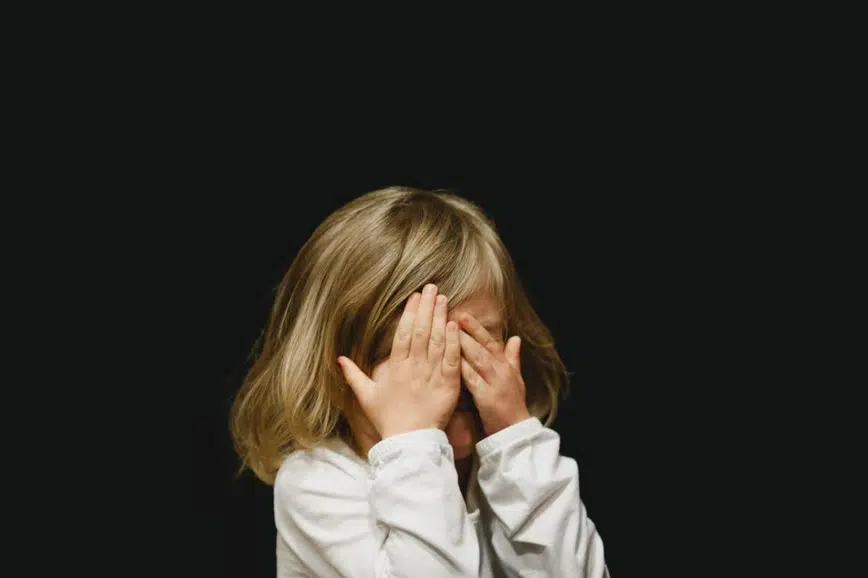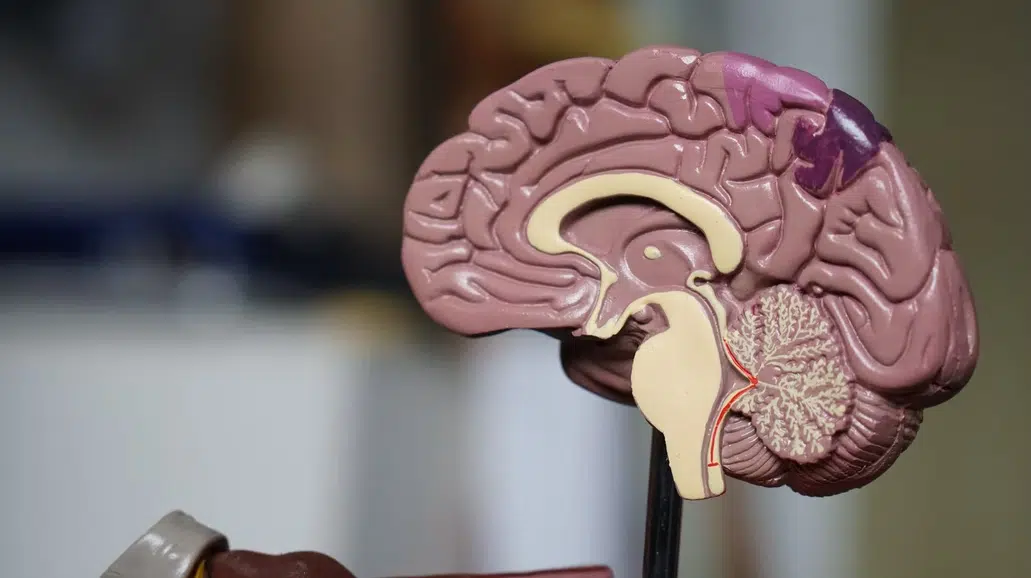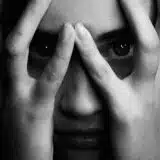
Why does fear exist?
Some people believe that there are good and bad emotions. Most people label fear as a negative emotion since it just triggers negative body sensations, thoughts, and feelings. But why do people feel fear, and how does it help people?
Some people see a spider and feel like the world is ending.
Some people feel like talking to the public is a death sentence.
Others refuse to go out in public at night, scared of being harassed or attacked.
Millions of things can trigger fear!
On the same thrust, people also have varying responses to fear. Some people scared of spiders try to throw objects at them or squash them, while others run away from them while screaming.
While some fears may sound foolish and specific responses may look comical at times, all of these are very normal and valid!
Fear is a crucial part of our existence and survival, and it also makes us human.
What is fear?

I’m sure everyone has felt fear at some point in their lives.
Fear is a normal, universal human emotion felt by everyone, which usually surfaces when faced with the threat of real or imagined harm– either physical, emotional, or psychological.
While most people deem it a negative emotion, it serves a purpose just like other universal emotions. Fear keeps us safe as it pushes us to move and cope with potential danger.
Again, all emotions are our friends. They all serve a purpose for us to live harmoniously. However, regardless of this, encountering a frightening experience is not always a pleasant experience for all.
But we always have to remember that fear exists to save us or, at the very least, reduce harm. Once our fear is triggered, we come to a fight, flight, or freeze mode.
Once we choose to fight, fear enables our body to do almost anything to stop the threat.
There are three critical factors in distinguishing frightening experiences, which are:
- Intensity – How grievous is the harm that is threatened?
- Timing – Is it immediate or impending harm?
- Coping – What actions can be taken to mitigate or reduce the threat?
Analysing these three factors will make it easier for the person to cope with the threat.
Consequently, dealing with the threat also lessens or removes the fear. On the flip side, failing to decrease the danger of harm will just escalate the fear.
People can feel fear for various reasons – some feel fear when they see bugs, others feel fear when they are walking alone at night, and some feel fear with the thought of ghosts.
Really, the causes of fear are boundless, but according to this article, the universal trigger for fear is the threat of harm, whether real or imagined.
What is the science behind fear?

Fear has a crucial role in the evolution of man.
It helped homo sapiens from centuries ago to survive in the wilderness. Also, it protected organisms against perceived threats to their existence.
Even some animals evolved in a way to protect themselves from harm out of fear, and yes, animals can feel intense fear, too, whether they are predators or preys!
According to an article written by psychiatrists who treat fear and study its neurobiology, the primary factor in how a person experience pain is primarily the context.
What is it? Context surrounds and injects meanings into events. It is essential to remember the past, interpret the present, and predict the future.
The hippocampus, which is closely connected with the amygdala, and prefrontal cortex are involved in a higher-level processing of context, which helps the brain interpret the perceived threat.
Fear reaction initially starts in the brain, specifically in the region of the brain called the amygdala. The amygdala is responsible for detecting the emotional prominence of a stimulus – how much something stands out. It then spreads to the body to make adjustments for the best defence.
When a person notices a threat stimulus (e.g. the sight of a predator or a scary civilian), the amygdala gets triggered. It activated areas involved in preparation for motor functions involved in fight or flight.
Additionally, it triggers the release of stress hormones or the sympathetic nervous system, which direct the body’s rapid involuntary response to danger.
The release of these hormones translates to body changes, which prepare us to protect ourselves from danger.
The brain becomes hyper-alert, pupils dilate, bronchi enlarges, breathing accelerates, heart rate and blood pressure rise, blood flow increases, stream of glucose to the skeletal muscles rises, and organs that are not vital in survival slow down.
Fear vs. Anxiety: Are they the same?

Given the current state of our society where there is imminent danger left and right, anxiety and fear are everyday emotions for some, especially those who are in the margins.
Since people feel these two things all the time, there is a common belief that they are synonymous. However, there is a considerable difference between the two: fear is a biological response to immediate danger (present), and anxiety is an emotion about what we think may happen (future).
Another notable difference between anxiety over fear is that anxiety reacts to emotions instead of danger in the environment. While these two can coincide, they are still not interchangeable.
What is the difference between fear and phobia?

Compared to anxiety and fear, a phobia is an excessive fear or anxiety. It is a type of anxiety disorder under the DSM-5. These are usually related to specific objects or situations that are unequal to the present danger.
There are three types of phobia, according to the DSM-5:
- Specific phobias – This can co-occur with other disorders like generalised anxiety, obsessive-compulsive disorder (OCD), or post-traumatic stress disorder.
Specific phobia can be triggered by the presence of a particular object or situation, such as spiders (arachnophobia), enclosed spaces (claustrophobia), clowns (coulrophobia), dark places (nyctophobia), blood or injuries (hematophobia), or heights (acrophobia), among many many others. - Social phobia – Social phobia is now called social anxiety disorder (SAD). To be diagnosed with SAD, a person much have ongoing fears of one or more social situations that involve exposure to strangers or perceived social judgment.
- Agoraphobia – It is the fear of open spaces or social situations, which often leads to extreme social isolation.
Phobia is a result of a dysfunction in the brain circuits that are responsible for the fear response.
The dysfunction makes a person recognise non-dangerous objects or situations as imminent threats, which makes them experience excessive fear and anxiety. Unlike normal fear, phobia causes dysfunction in a person’s daily life.
Clinical characteristics of phobias depend on the type of phobia, degree of severity on an individual, and how it interferes with a person’s ability to function normally. For people who have severe phobia to the extent that it it already interfering with their normal lives, exposure therapy is the first choice of treatment.
Exposure therapy is a type of behavioural therapy that puts a patient in a safe environment where they are gradually exposed to what they claim to fear. The end goal of this mode of therapy is help patients manage their fears by learning to meaningfully acknowledge, manage, and control them.
What are the most common causes of fear?

The universal trigger for fear is the threat of harm, real or imagined. The most common fear triggers are:1
- Darkness or loss of visibility of surroundings
- Heights and flying
- Social interaction and/or rejection
- Snakes, rodents, spiders, and other animals
- Death and dying
However, one journal article argues that fear of the unknown may be the fundamental fear that underlies anxiety and neuroticism.
The author defines the fear of the unknown as “an individual’s propensity to experience fear caused by the perceived absence of information at any level of consciousness or point of processing.” While this is still a working theory, it is logically supported by the idea of evolution and other psychological factors.
Regardless, the fact remains that the causes of fear are very different from one person to another, and their responses to it vary.
How will you know if you are in a state of fear?

Now that we know what happens to our brains and body when we encounter fearful experiences, let’s break down the bodily symptoms people feel when they are in a state of fear.2
- Changes in heart rate – The body responds to frightening situations by releasing adrenaline. This hormone prepares the body for fight or flight, which sets the body to action.
The increase in heart rate and breath is always proportionate to the level of perceived threat. - Shortness of breath – Since heart rate and breath increase when experiencing fear, shortness of breath follows. According to some researchers, this is a crucial survival reaction.
A lower proportion of time spent breathing can prepare the brain for quicker action. - Butterflies, upset stomach, or nausea – Another hormone the body produces when in a state of stress and fear is cortisol. This steroid hormone affects numerous parts of the body and mainly helps regulate the body’s response to stress.3
It also slows down insulin production to give muscles immediate energy. But once the body is over the stressful situation, the hormonal balance automatically goes back to normal. - Chills or increased sweating – Adrenaline has many effects: increased sweating or even chills. Chills often occur because adrenaline stimulates muscle contractions, including the tiny muscles surrounding the hair follicles.
This phenomenon is commonly referred to as “goosebumps,” which also happens when a person feels cold. - Trembling muscles – All the hormones released when in a state of fear increase the muscles’ blood flow, making muscles tremble.
The 3 Fs: Flight, Fight, or Freeze

Flight, Fight, or Freeze are involuntary physiological changes in the body and mind when a person feels threatened.
These 3 Fs are innate response that keeps a person safe from danger by either preparing them to face, escape, or hide from the situations.
Like fear, people can experience this response regardless of whether the danger is real or imaginary. This means that there are times that this response is activated even in situations where it is not necessary.
Some people add another type of response to the 3 Fs, which is the “flop.” This response means becoming absolutely physically or mentally unresponsive. An example of a “flop” response is fainting.
Now let’s look into each response and how our body responds respectively:
- Fight – to take action to eliminate the danger (e.g. throwing an object at an aggressive dog, self-defence, etc.)
- Flight – to escape the danger (e.g. running away from an aggressor)
- Freeze – also described as “attentive mobility” where a person becomes immobile in the face of danger (e.g. completely stops all movement)
When a person is in a fight or flight mode, the body’s autonomic nervous system (ANS) gets activated due to acute stress. The ANS controls rapid and unconscious responses like reflexes. It also sends messages to the body to prepare for danger differently.
Under fight or flight mode, the body will develop:
- Rapid breathing and heart rate
- Flushed or pale skin
- Tense muscles
- Dilated pupils
- Dry mouth
A tough fight or flight mode can also become a panic attack or trigger asthma attacks in people with the condition.
On the other hand, people on freeze response are vigilant yet unable to move or take action. This response causes the following:
- Physical immobility
- Drop in heart rate
- Muscle tension
There are various reasons why people freeze during imminent danger; some reasons are:
- A 2017 study reported that the freeze response may function as a time for the brain to decide how to appropriately respond.
- It is also reported that freezing is associated with better visual perception, which helps in processing threat-relevant information faster.4
- Being very still and silent may keep a person safe or even cause an attacker to lose interest.
- Freeze response may be related to disassociation, a common occurrence for people with traumatic experiences.5
It usually takes 20-60 minutes for the body to return to its normal state. A person may still feel tired, achy, or anxious afterward. It’s always important to do self-care after going through stressful and fearful situations.
How does chronic fear affect a person?

Even if your body only takes 20-60 minutes to return to its normal state after going through a fearful and stressful situation, living under constant fear still has multiple severe health consequences.
Chronic fear can impact the following:6
- Physical health – Living with chronic fear can weaken a person’s immune system and cause cardiovascular damage, gastrointestinal problems, and decreased fertility. Additionally, it can also expedite aging and also premature death.
- Memory – Fear can weaken the formation of long-term memories and cause damage to certain parts of the brain like the hippocampus, which plays a significant role in learning and memory.
Damage to these parts of the brain can make it more challenging for a person to regulate fear, and it may also leave a person anxious all the time. - Brain processing and reactivity – Fear makes it more difficult to regulate fear. It also challenges managing emotions, reading non-verbal messages and other information, reflecting before acting, and acting ethically.
It negatively affects a person’s thinking and decision-making skills, making them vulnerable to intense emotions and impulsive reactions. - Mental health – Chronic and/or long-term fear can cause anxiety, clinical depression, and PTSD.
So while fear is a normal emotion that helps us survive, chronic and long-term fear have adverse effects on our mental and physical wellbeing.
So it’s important to see mental health professionals when you feel like fear is already causing problems for you living your everyday life.
How can we overcome our fears?

Aside from going to a mental health professional, there are many things you can do for yourself to overcome your fears!
Here are easy steps for you to overcome fear and anxiety, according to the Mental Health Foundation:
- Identify the root cause of your fears. You need to know what makes you afraid and why it’s making you afraid. You cannot overcome your fear when you do not understand what and why you are scared. It’s like putting out a fire without knowing where it is coming from.
- Face your fears at your own pace. People tend to avoid situations they are afraid of, but sometimes exposing yourself to your fears can be an effective way to minimise or eliminate that fear.
However, always be mindful that you only take challenges you know you can manage. Do not face your fears which you know you are not ready for. Every baby steps count when looking at the bigger picture. - Know yourself. You can keep a diary or a journal where you will write down when you felt fear, what happened, how your body felt and reacted, and how you felt afterward.
Dissecting your fear includes knowing your personal physical symptoms when starting to feel frightened. This step can help you be more mindful as you go through the process.
Aside from facing and dissecting your fears, you can also bring things or memorise affirmations that can help you calm down when you become frightened.
What can we do to decrease long-term and/or chronic fear?

Here are simple daily activities that you can do to cope with fear:
- Exercise since it can take your mind away from your fear;
- Learn relaxation and mindfulness techniques that can help you cope with the mental and physical feelings of fear;
- Reduce sugar and caffeine intake to decrease levels of anxiety and fear; and
- Avoid alcohol or drink in moderation since its after-effects can make you feel more afraid or anxious.
- Complement all of these healthy habits and actions by going to therapy.
Everyone can and should go to therapy, even if they don’t have a clinical diagnosis! Therapy and other forms of support can help a person cope and overcome their fears.
Other beneficial things are: doing talk therapies (e.g. Cognitive Behavioural Therapy, individual therapy, exposure therapy, etc.) taking medication for short-term help, and joining support or self-help groups with people who have similar experiences and stories.
You are not alone in this, and many people suffer from chronic and long-term fear, and never forget, that there is no right or way wrong on how to respond to danger. As long as you get out of harms’ way and you take care of yourself after, then you are doing a great job at handling and managing your fears.
So do not be afraid to communicate and open up about it, and you will never know; maybe the person you’re closest with is also afraid of the same thing!























